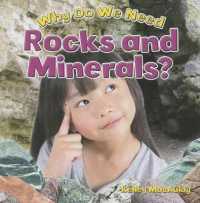Full Description
Named after an archaeological site discovered in 1951 in Zhengzhou, China, the Erligang civilization arose in the Yellow River valley around the middle of the second millennium BCE. Shortly thereafter, its distinctive elite material culture spread to a large part of China's Central Plain, in the south reaching as far as the banks of the Yangzi River. The Erligang culture is best known for the remains of an immense walled city at Zhengzhou, a smaller site at Panlongcheng in Hubei, and a large-scale bronze industry of remarkable artistic and technological sophistication. This richly illustrated book is the first in a western language devoted to the Erligang culture. It brings together scholars from a variety of disciplines, including art history and archaeology, to explore what is known about the culture and its spectacular bronze industry. The opening chapters introduce the history of the discovery of the culture and its most important archaeological sites.
Subsequent essays address a variety of important methodological issues related to the study of Erligang, including how to define the culture, the usefulness of cross-cultural comparative study, and the difficulty of reconciling traditional Chinese historiography with archaeological discoveries. The book closes by examining the role the Erligang civilization played in the emergence of the first bronze-using societies in south China and the importance of bronze studies in the training of Chinese art historians. The contributors are Robert Bagley, John Baines, Maggie Bickford, Rod Campbell, Li Yung-ti, Robin McNeal, Kyle Steinke, Wang Haicheng, and Zhang Changping.
Contents
Contributors 7 Foreword and Acknowledgments 9 Preface 11 INTRODUCTION 1. Erligang Bronzes and the Discovery of the Erligang Culture 19 Robert Bagley 2. Erligang: A Perspective from Panlongcheng Zhang Changping 51 DEFINING THE ERLIGANG CIVILIZATION 3. China's First Empire? Interpreting the Material Record of the Erligang Expansion 67 Wang Haicheng 4. Civilizations and Empires: A Perspective on Erligang from Early Egypt 99 John Baines 5. Erligang: A Tale of Two "Civilizations" 121 Roderick Campbell 6. The Politics of Maps, Pottery, and Archaeology: Hidden Assumptions in Chinese Bronze Age Archaeology 137 Yung-ti Li ERLIGANG AND THE SOUTH 7. Erligang and the Southern Bronze Industries 151 Kyle Steinke 8. Erligang Contacts South of the Yangzi River: The Expansion of Interaction Networks in Early Bronze Age Hunan 173 Robin McNeal PARTING THOUGHTS 9. Bronzes and the History of Chinese Art 191 Maggie Bickford References 213 Index 226 Image Credits 235








